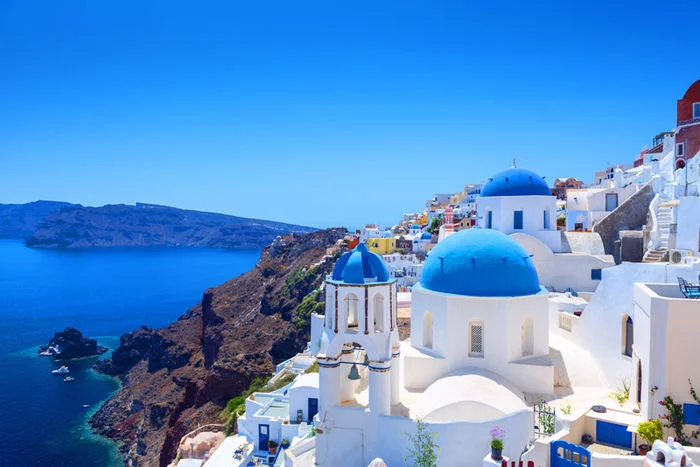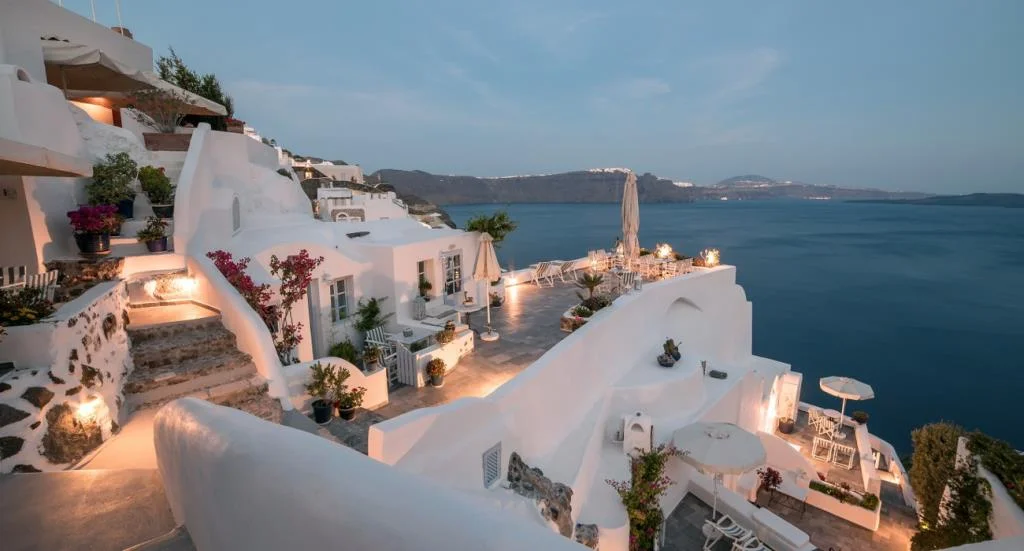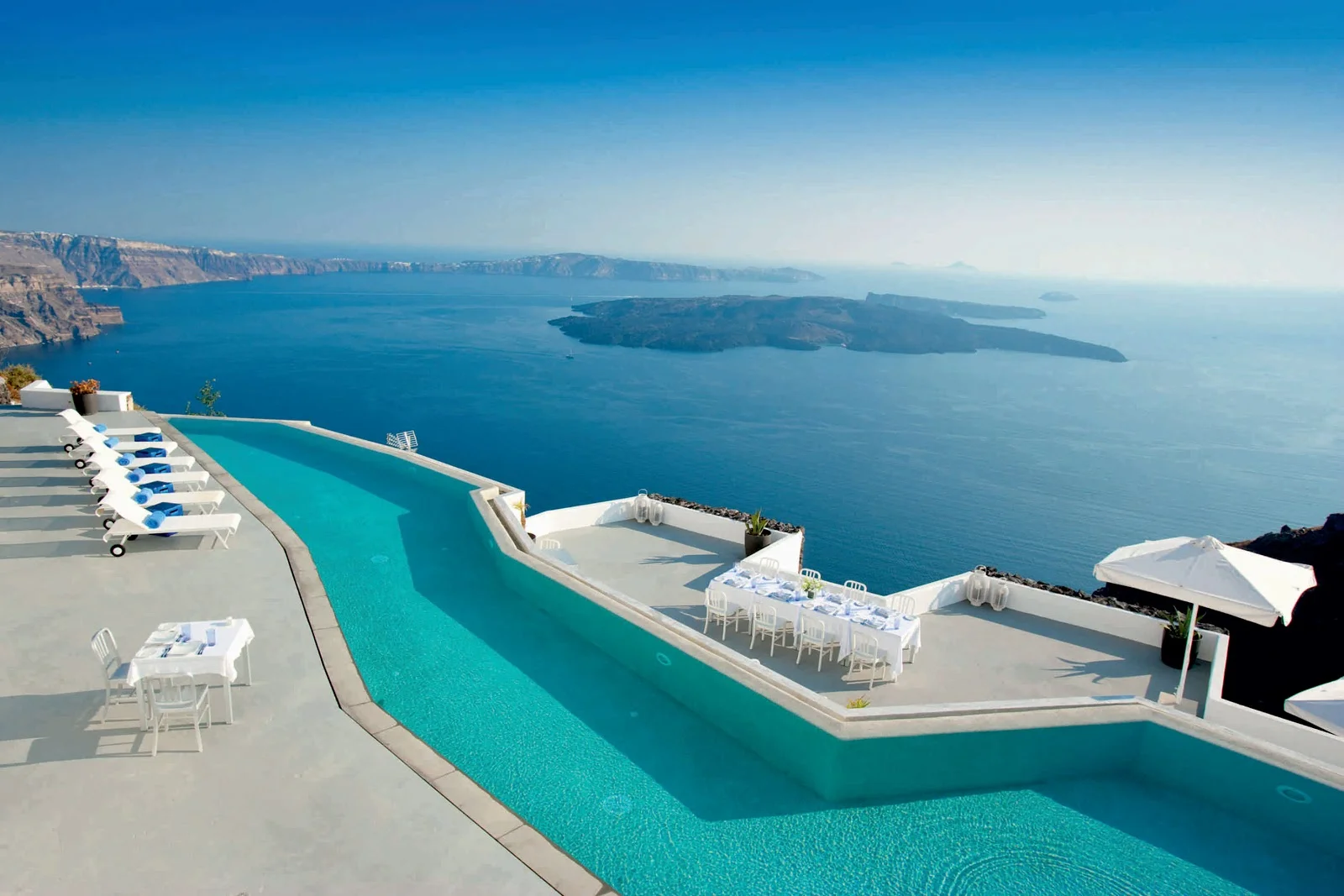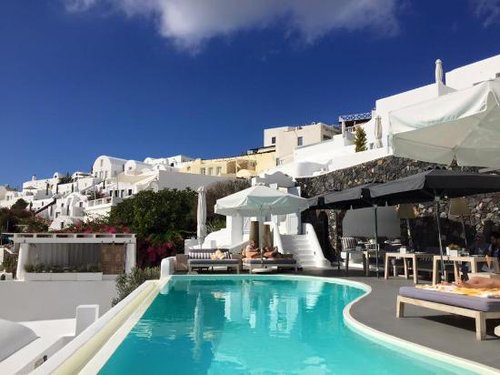Santorini
Dreamy Santorini is in the Cyclades. It has become, in recent years, one of the most popular of all the Greek Islands, photogenic for its iconic caldera and its clinging-to-the-clifftop whitewashed villages which overlook the still-smoking volcano across the expanse of quite phenomenal blue.
The prettiest and most dramatic places to stay are those hillside hotels with caldera views in Firostefani, Fira, Imerovigli and, best for sunset, pretty Oia; they are created from ancient cave dwellings, now all smartened up and with pools and spas installed, and characterised by simple, all-white interiors. Fira is the capital, all winding streets and steps running up and down the hillside, dotted with shops, bars, nightclubs and restaurants.
Where to go
The one ‘must’ in Firá is the Museum of Prehistoric Thera, with its Minoan murals rescued from pre-cataclysm Akrotíri. Santoríni’s dark, volcanic-sand or pebble beaches are as much curiosities as bathing venues; the most practical and enjoyable are Perivólas and Vlyháda in the far south of the island. Two classic hiking routes among many go from Períssa to Kamári, past post-eruption ancient Thera, and along the caldera edge from Imerovígli to Oía. For a sense of the ancient volcano’s lingering power, take a day-trip to the caldera islets with their shoreline hot springs and clinker surfaces.
Where to stay
The Santorini Grace sits on the very edge of a cliff; viewed from above, it looks like a sunbather languidly dangling a limb over the lip of the island's famous caldera. Carved out of two village houses partially destroyed in the 1956 earthquake, the hotel had 17 rooms and seven suites, plus two pools. All the rooms have terraces and are simply decorated in white. The hotel is not suitable for the elderly or infirm (there are 149 steps to negotiate), or children (under 14s are not allowed). Book room number 46, a honeymoon suite, for complete privacy.
Katiki
Located right on the cliff edge in Oia, this is one of the island's best hotels. Two split-level suites are in the 18th-century former home of a noble family: the façade is painted its original pale ochre and the interiors are decorated with antiques and Orthodox icons displayed on pale-blue walls. The other 25 rooms and suites, with similar interiors, sea views and patios, have bright white exteriors and look like a jumble of sugar cubes tumbling down the cliff. More than 200 steps connect the rooms, swimming pools - including a beautiful infinity pool - and public areas, and the small rooftop terrace restaurant serves delicious, fresh seafood. The nearest beach is five minutes' free transfer away, although it's probably quicker to walk in summer, when the narrow roads are clogged with coaches.
Contact All World Journeys for more information
+447824 099686





